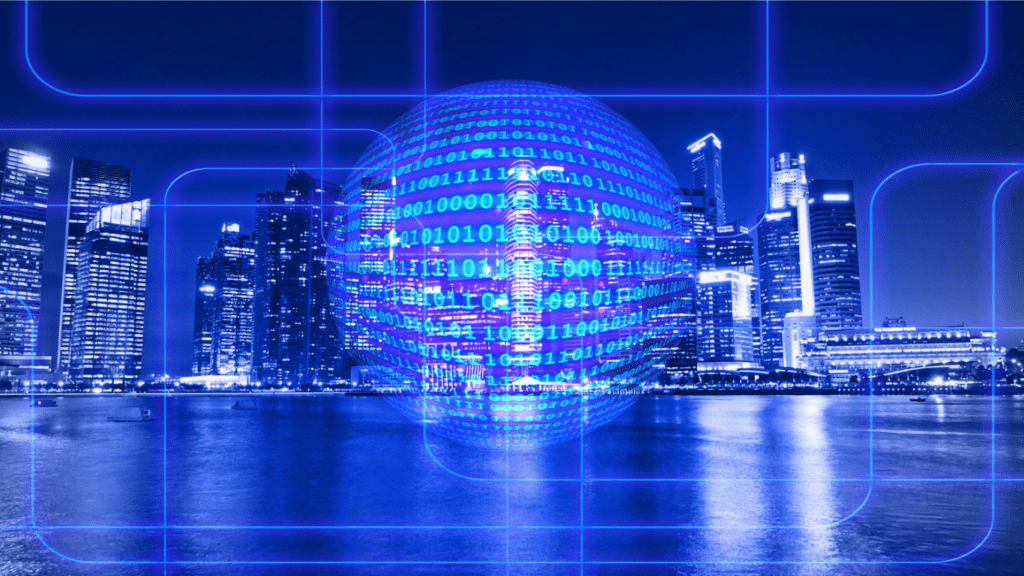Understanding NFTs
NFTs, or Non-Fungible Tokens, represent unique digital assets verified using blockchain technology. Their distinctiveness lies in their non-interchangeability, contrasting with cryptocurrencies like Bitcoin.
The Evolution of NFTs
NFTs emerged in 2012 with the introduction of Colored Coins on the Bitcoin blockchain. Initially, they lacked popularity but gained traction with Ethereum’s launch in 2015, which provided a more flexible framework. Key projects like CryptoKitties in 2017 further highlighted NFTs, showcasing their potential in digital collectibles.
Current Market Landscape
As of 2023, the NFT market has seen substantial growth. Leading platforms like OpenSea facilitate vast transactions in digital art, music, and virtual real estate. High-profile sales, such as Beeple’s $69 million artwork, underscore the market’s appeal and potential. Marketplaces now host various assets, including fashion, gaming items, and sports memorabilia, demonstrating NFTs’ broad applicability.
Trend 1: Increased Utility
NFTs are evolving beyond simple digital collectibles, finding new applications in various sectors. Two key areas where their utility is growing are gaming and virtual real estate.
Integration with Gaming
NFTs are revolutionizing the gaming industry by enabling true ownership of in-game assets. Gamers can now buy, sell, and trade unique items, characters, and even entire game worlds on blockchain-based platforms.
Games like “Axie Infinity” illustrate the potential of NFTs, where players earn while playing through asset trade. This integration creates a new economy within gaming, driving both player engagement and monetary value.
Real Estate and Virtual Lands
NFTs are transforming the concept of real estate by extending it into the virtual realm. Platforms like “Decentraland” enable users to purchase, develop, and monetize virtual lands using NFTs.
This new digital real estate market allows for unique opportunities in investment and content creation. Virtual properties function like physical ones, offering exclusivity and potential appreciation, opening new horizons for real estate enthusiasts and digital entrepreneurs alike.
Trend 2: Enhanced Security
NFT transactions demand robust security measures, given the high stakes involved. As the NFT landscape evolves, innovations in blockchain security and regulatory frameworks become vital.
Blockchain Innovations
- Blockchain innovations play a key role in improving NFT security.
- Advanced consensus algorithms, such as Proof of Stake (PoS) and Delegated Proof of Stake (DPoS), enhance transaction security by making networks less susceptible to attacks.
- Projects like Ethereum 2.0 aim to integrate these algorithms to boost the security of NFT transactions.
- Additionally, multi-signature wallets are becoming widely adopted, requiring multiple approvals before executing a transaction, further safeguarding digital assets.
Regulation and Compliance
Regulation and compliance frameworks are critical in establishing trust and security within the NFT market. Governments and regulatory bodies are increasingly focusing on creating clear guidelines for NFT transactions to prevent fraud and ensure market stability.
For instance, the Financial Action Task Force (FATF) has issued guidelines surrounding virtual assets, including NFTs, to combat money laundering and terrorism financing. By adhering to these frameworks, NFT platforms can provide more secure and compliant environments for users.
With these advancements, the future of NFT security looks promising.
Trend 3: Environmental Sustainability
The environmental impact of NFTs has sparked significant discussions. Addressing the sustainability concerns is essential for the future of the NFT market.
Energy-Efficient Blockchain Solutions
Energy-efficient blockchain solutions play a critical role in making NFTs environmentally sustainable. Proof of Stake (PoS) systems, for instance, drastically reduce energy consumption compared to traditional Proof of Work (PoW) protocols.
Ethereum’s shift from PoW to PoS has significantly decreased the network’s energy usage. Tezos, another blockchain, already employs an energy-efficient PoS mechanism, making it a popular choice for eco-friendly NFT projects.
Green NFT Projects
Green NFT projects are emerging to promote environmental sustainability. Initiatives like CleanNFTs aim to minimize the carbon footprint of NFT transactions.
Projects such as Aerial, which offer carbon offset options for NFT creators and buyers, are setting new standards. By integrating sustainability into their operations, these projects not only address environmental concerns but also appeal to eco-conscious consumers, driving a positive change in the NFT ecosystem.
Trend 4: Mainstream Adoption
As NFTs continue to evolve, mainstream adoption is no longer a distant goal. Integration with popular culture and seamless user experiences contribute significantly to their growing acceptance.
Celebrity and Brand Involvement
Celebrities and brands have begun endorsing NFTs, attracting diverse audiences. Notable figures like Snoop Dogg and Eminem have launched their NFT collections, generating massive interest.
Brands like Nike and Adidas have joined the trend by creating digital collectibles tied to physical products. These endorsements create significant buzz and validate NFTs as a mainstream asset class.
NFT Marketplaces Expansion

The expansion of NFT marketplaces enhances accessibility and drives adoption. Platforms like:
- OpenSea
- Rarible
- NBA
Top Shot make it easier for users to buy, sell, and trade NFTs.
These platforms leverage user-friendly interfaces and simplified processes, reducing entry barriers. Additionally, partnerships with major financial institutions provide secure transaction methods, boosting consumer confidence.
Mainstream adoption hinges on making NFTs more accessible and integrating them into daily life. With the combined efforts of celebrities, brands, and innovative marketplaces, NFTs are poised to become a significant part of the digital economy.
Challenges to Overcome
NFTs hold immense potential, but several challenges must be addressed for sustainable growth.
Market Volatility
The NFT market experiences significant price fluctuations. High-profile sales can artificially inflate prices, leading to unsustainable valuations. For example, Beeple’s “Everydays” sold for $69 million, creating a perception that every digital artist can achieve similar success. Price corrections can result in financial losses, leading to investor skepticism.
Intellectual Property Issues
Intellectual property (IP) concerns arise frequently with NFTs. Unauthorized minting of NFTs using artwork without creator consent is common. This issue undermines trust and deters artists from participating. Implementing robust verification systems on NFT platforms is critical to safeguarding creator rights and fostering a trustworthy ecosystem.

 Ricky Morenolendez is a key contributor at The Digi Chain Exchange, recognized for his deep expertise in cryptocurrency and blockchain technology. With years of experience in analyzing market trends and providing actionable insights, Ricky has become a trusted voice in the crypto space. His work focuses on helping investors understand the nuances of digital assets, from Bitcoin to emerging altcoins. Ricky’s dedication to educating the community on market strategies and crypto developments has made him an invaluable asset to The Digi Chain Exchange team.
Ricky Morenolendez is a key contributor at The Digi Chain Exchange, recognized for his deep expertise in cryptocurrency and blockchain technology. With years of experience in analyzing market trends and providing actionable insights, Ricky has become a trusted voice in the crypto space. His work focuses on helping investors understand the nuances of digital assets, from Bitcoin to emerging altcoins. Ricky’s dedication to educating the community on market strategies and crypto developments has made him an invaluable asset to The Digi Chain Exchange team.

